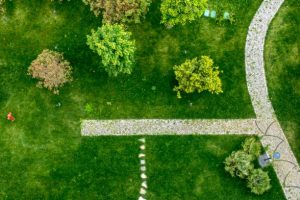Many fundamental principles of Landscape Design will assist you in making your home look its best. In addition to the aesthetic quality of a landscape, it is essential to consider functional principles. The principles of design are universal and apply in all situations. They are simple yet critical. Following them will ensure your landscape design is both beautiful and functional. Listed below are a few of the principles of design you should consider. Read on to learn more.
 Themes – There are many styles of landscapes, including formal and informal. For instance, formal styles can include French, Spanish, Italian, or Middle Eastern, while more informal designs may include English, American, or Oriental. Themes can also be applied to your planting plans, such as tropical or desert plants. You can also choose from a variety of plant colours to create a theme, or you can choose plants with distinct characters and colours.
Themes – There are many styles of landscapes, including formal and informal. For instance, formal styles can include French, Spanish, Italian, or Middle Eastern, while more informal designs may include English, American, or Oriental. Themes can also be applied to your planting plans, such as tropical or desert plants. You can also choose from a variety of plant colours to create a theme, or you can choose plants with distinct characters and colours.
Composition – The principles of good landscape design should be based on balance and proportion. Proper proportion refers to the relative size of different elements and groups of components. Using transitions helps to achieve this goal. A landscape without a harmonious balance will have a lot of abrupt transitions. If the scale is off, your garden will look chaotic and unprofessional. So, use the principles of Landscape Design to help make your home look its best.
Balance – Using different elements in the landscape creates unity and visual balance. Asymmetry and symmetrical balance are common landscape design principles. Asymmetrical balance creates a legal effect and gives a sense of stability, while symmetrical balance emphasizes unity and movement. In addition, the symmetry and asymmetry of a landscape create an illusion of unity through interconnectivity. Asymmetry, in contrast, creates a natural balance and is the preferred choice for most homes.
Element – A well-designed landscape can soften spaces between buildings and create routes for people, animals, and water. A properly planned landscape can improve the quality of life and increase the value of a property. Landscape architecture can be divided into two main categories, hardscape and softscape, and the principles are often discussed in conjunction with each other. One should consider each element and decide how to use it to achieve the desired results. In addition to the principles of landscape design, the principles can also help in deciding which plants should be placed in a garden.
Choosing the right colour combination is essential when choosing plants. While varying shades of green and blue are suitable for a landscape, combining different elements can be overwhelming. A balanced palette will make the garden feel more inviting. Repetition is an essential concept in landscape design. But it doesn’t mean using the same elements over. Instead, it can mean using similar forms or textures in different locations. For instance, one plant may complement another plant group. A few other elements of Landscape Design can create a cohesive whole through repetition.
The most important part of the CatnikDesignStudio Landscape Design Adelaide process is creating a master plan. The master plan helps you save time and money by avoiding costly mistakes. By carefully considering the needs and wants of the client, the master plan will reflect the desired aesthetics, environmental conditions, and functional aspects of the landscape. Landscape Design aims to create a sustainable, functional, and beautiful environment. Several basic principles of Landscape Design must be considered to ensure the best possible outcome.
Another important concept of Landscape Design is unity. Unity is achieved when elements in the landscape complement each other. For example, if a particular landscape component is too large or small, it will draw attention away from the rest of the garden. In addition, repetition helps the overall composition, whereas a vast item will overwhelm the rest of the garden. In addition, unity is achieved through a consistent theme of colour, form, and texture. For example, red colour can be achieved by selecting plants that have reddish foliage and flowers.
Developing a design strategy begins with the public area. The public area is usually the house area visible to the public. The design should highlight the house while keeping the rest of the space uncluttered. Parking should also be accessible. Parking may be difficult on small lots, so consider installing circular or double driveways. When planning the public area, you can incorporate plantings to direct visitors to the front door. Bright flowers are also an effective way to focus on the front door.
